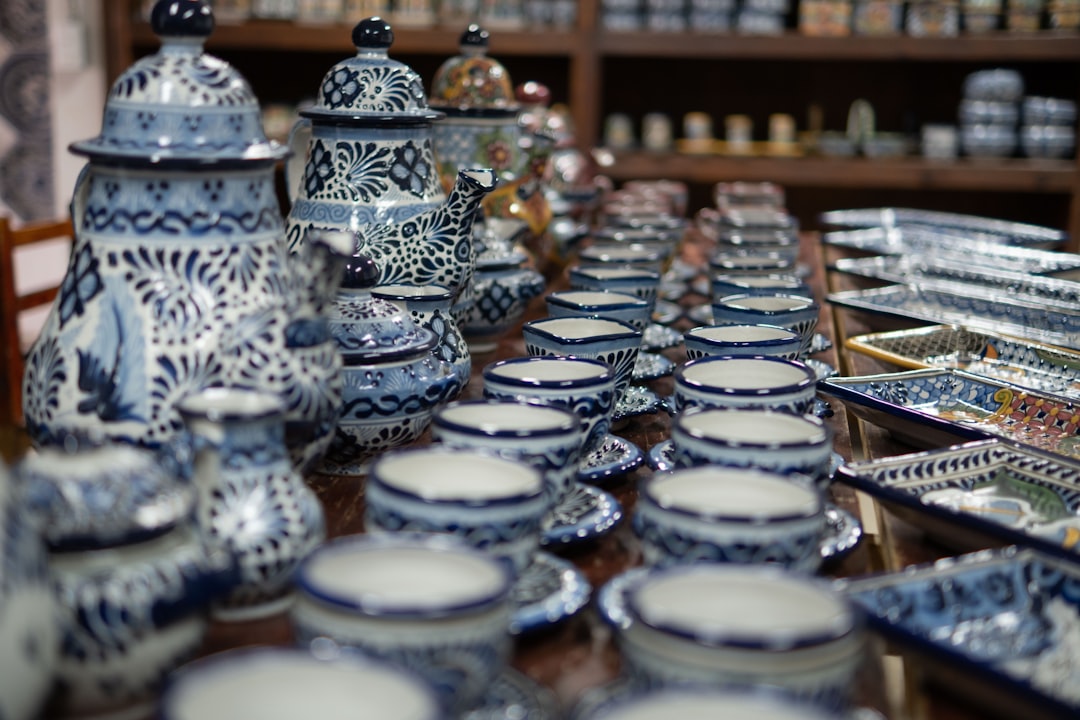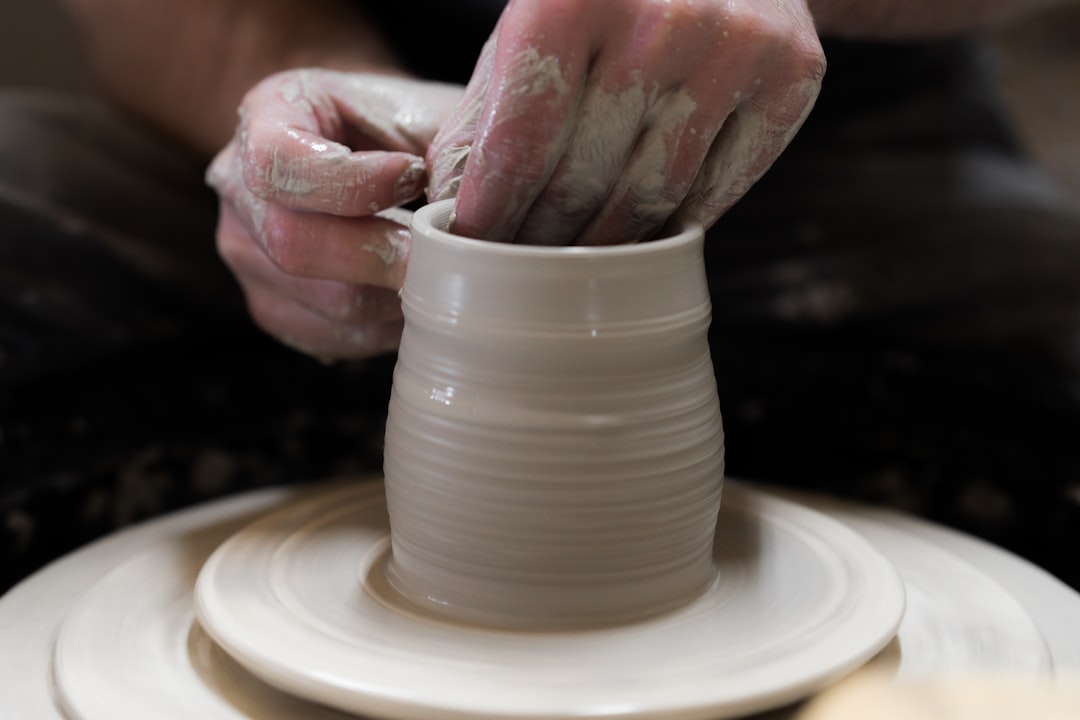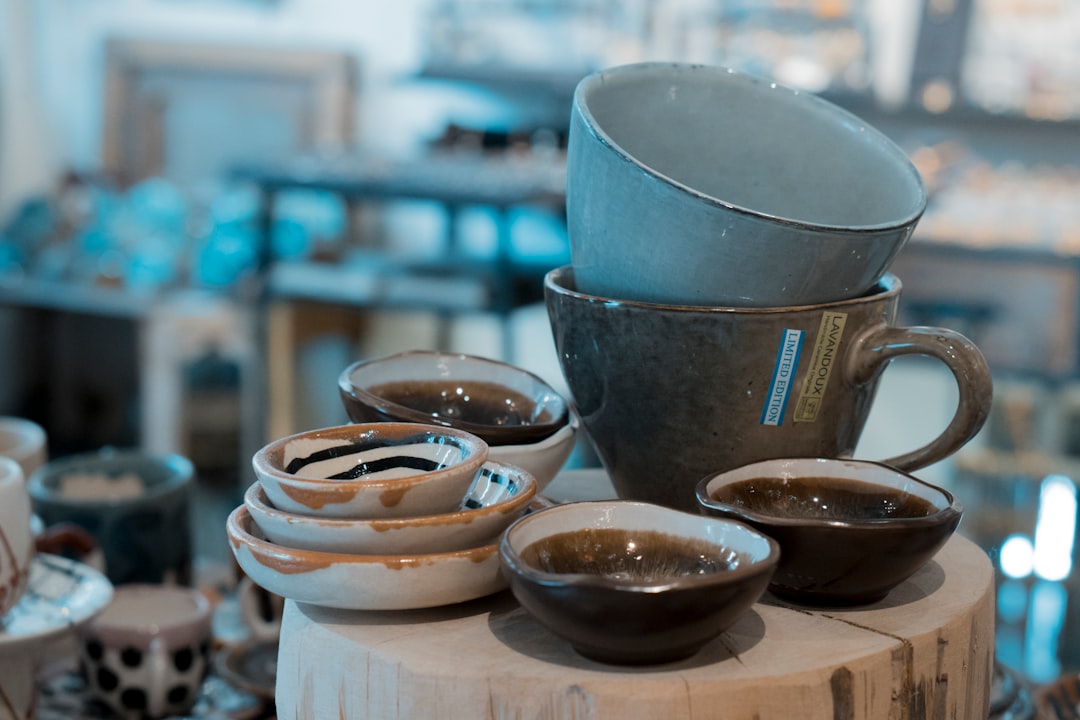

Engage prospects with a scan and streamline customer engagement with FREE QR code marketing tools by Sona – no strings attached!
Create a Free QR CodeFree consultation

No commitment

Engage prospects with a scan and streamline customer engagement with FREE QR code marketing tools by Sona – no strings attached!
Create a Free QR CodeFree consultation

No commitment
In today’s digitally driven world, QR codes have evolved from novelty to a strategic powerhouse in bridging offline engagement with online action. For China and porcelain repair services, QR codes present a seamless channel to capture high-value prospects who might otherwise remain anonymous, allowing every print touchpoint to become a measurable moment of opportunity. The tactile nature of museum-quality restoration, antique china appraisal, and client consultations often begins in the physical world; yet moving prospects from fleeting interest in a brochure or trade show display to an actionable digital conversion remains a challenge many service providers wrestle with.
Business owners and marketing leaders in China and porcelain repair services increasingly face the frustration of lost leads: high-intent prospects who interact with physical marketing materials but never enter the CRM. The impact is tangible: missed inquiries, delayed outreach, and ultimately opportunities ceded to more nimble competitors. QR codes allow providers to sidestep these traditional barriers by creating frictionless connections between real-world interactions and tailored digital journeys such as quote requests or instant consultation booking, while unlocking new layers of insight into which assets actually drive engagement.
By replacing outdated analog steps such as paper intake forms, static brochures, or disjointed appointment systems with QR-enabled workflows, businesses transform scattered interactions into unified, data-rich processes. This article illustrates how QR codes unlock sustained growth in China and porcelain repair services by surfacing high-potential leads that would otherwise remain invisible and enabling advanced audience segmentation for continued outreach.

For many China and porcelain repair services, a persistent challenge is failing to capture interest from high-value prospects who engage through print or in-person touchpoints but never complete a web form. Lost opportunities often stem from disjointed offline-to-online workflows and lack of immediate data capture. When a museum registrar pockets a brochure or a homeowner snaps photos for later, the intent dissipates if there is no quick path to act in the moment.
Modern QR-enabled solutions resolve this gap by linking every piece of print collateral to dynamic digital experiences that meet prospects exactly where they are in the journey. Instead of asking people to type URLs or remember to call, a scan launches a pre-filled form, a guided quote flow, or a direct booking page. The result is less friction, faster follow-up, and more measurable engagement that feeds your CRM and marketing automation system.
By transforming passive analog workflows into proactive, real-time digital touchpoints, QR codes address the root causes of lost leads and sluggish response cycles. The payoff is measurable: cleaner data at source, shorter sales cycles, and a steady rise in qualified inquiries from the offline moments that used to be untrackable.

Traditional marketing in China and porcelain repair services often suffers from a lack of visibility. Homeowners, collectors, and museum professionals research services at shows, in galleries, or via print mailers and leave no digital trace. Without that footprint, teams struggle to personalize follow-up, prioritize high-intent leads, or attribute budget to the channels that merit reinvestment. The consequence is predictable: promising prospects remain anonymous, outreach is delayed, and spend is impossible to justify with confidence.
QR codes bridge this visibility gap by converting each physical touchpoint into a measurable digital entry point. From display labels to workshop flyers, from repair boxes to appraisal certificates, a simple scan turns a passive impression into an active journey. With dynamic QR codes, you can adapt destinations over time without reprinting materials and track engagement to understand what works and why.
By solving these pain points, QR codes shift from a tactical add-on to a core strategy. They make physical touchpoints smarter, speed up decision making, and provide the measurement needed to continuously improve lead generation.

One operational challenge in the restoration field is tailoring digital follow-up to the specific context of each interaction. A museum registrar needs a different path than a homeowner seeking care instructions. Generic forms and untagged traffic create confusion, slow follow-up, and missed upsell opportunities. The right QR format for the right situation eliminates that ambiguity.
Multiple QR code formats can support your intake, education, and retention goals. Choose based on the action you want, the environment where scanning happens, and the data you need for attribution and personalization. In most cases, dynamic QR codes deliver the greatest strategic value because you can update destinations and track performance without reprinting assets.
When in doubt, start with dynamic web link QR codes tied to campaign-specific landing pages and CRM integrations. They enable A/B testing, precise tracking, and post-scan automation that static codes cannot match.

In China and porcelain repair services, growth often hides in offline interactions that go unmeasured. Providers lose momentum when they cannot identify which trade show visitors represent real revenue potential or when finished repairs do not prompt referrals and repeat work. QR codes surface these signals wherever clients already engage so you can capture intent at the source and nurture it.
Mapping QR placements to the real-world journey ensures that every interaction advances the relationship. The more intentional you are about pairing a code with a clear next step, the more consistently you will turn curiosity into qualified demand.
These placements become more powerful when each code is unique to its asset or location. That way you can attribute outcomes to specific environments, fine-tune creative and calls to action, and invest more aggressively in the channels that consistently generate revenue.

Conversion rates often sag when print-driven interest meets lengthy forms, confusing paths, or delayed responses. QR codes solve for speed and relevance. They compress the steps between intrigue and action, capture data at the moment of intent, and provide self-service entry points for prospects who are not ready to call.
Design three to five use cases that map to your typical client interactions. Prioritize those that replace manual steps, shorten the time to first touch, and offer educational value that builds trust in your craftsmanship.
As you implement these use cases, measure scan-to-action rates, time to first response, and downstream revenue to prove impact and guide ongoing optimization.
One of the most costly challenges in the restoration field is the inability to distinguish casual interest from genuine buying intent. Without context about who scanned, where they scanned, and what they did next, teams resort to broad outreach that wastes budget and misses the highest-fit opportunities. QR codes turn physical-world interactions into segmentation fuel using intent data. For B2B scenarios, see B2B QR marketing for additional context.
By deploying unique QR codes across touchpoints, you can tag audiences by journey stage, location, and action. These tags sync to your CRM and ad platforms so you can personalize follow-up and deploy intent-driven retargeting that feels relevant instead of repetitive.
In this industry, audience distinctions often include homeowners versus institutional buyers, urgent breakage incidents versus planned conservation, local walk-ins versus mail-in clients, and new collectors versus repeat patrons. Use these distinctions to craft follow-up that respects needs and elevates perceived value.
Siloed marketing leads to duplicated effort, fragmented data, and inconsistent experiences. In services that hinge on trust and precision, that fragmentation is costly. QR codes function as connective tissue across print, digital, and in-person channels, turning one-time interactions into cohesive journeys you can measure and refine.
When QR deployment is centralized and integrated with analytics, your team can see the full path from first scan to booked repair. That visibility informs smarter creative, better channel mix decisions, and faster optimizations while giving clients a consistent experience regardless of how they found you.
When managed in a central platform, QR codes become the offline onramp to your digital engine. You can monitor performance, sync data to your CRM, and attribute revenue to the placements that did the heavy lifting.
Launching QR campaigns in a restoration business is about aligning craftsmanship with convenience. The goal is to make every physical interaction a door into a digital experience that saves time for your client and your team while capturing the data you need to respond quickly and personally. Use the following steps as a repeatable framework for each campaign.
Treat this checklist as a living process. After the first deployment, revisit each step with real performance data so your subsequent campaigns are faster to build, clearer in their calls to action, and stronger in conversion.
This end-to-end workflow ensures that every campaign is trackable and that each insight fuels better targeting and higher close rates. Over time, you will build a library of proven placements and creative templates that accelerate future launches.
One of the industry’s most persistent frustrations is the lack of revenue attribution clarity. Teams want to know which trade shows deserve renewal, which brochures drive bookings, and which content signals strong intent. Traditional web analytics rarely capture context from physical touchpoints, and they often stop at the visit without connecting to revenue.
Modern QR implementations close that loop. When each code is unique and tied to a campaign, you can monitor scan behavior, downstream actions, and the accounts that ultimately convert. Integrations with your CRM and ad platforms bring visibility from first scan through to booked repairs and repeat work.
With platforms like Sona QR and Sona, you can capture granular scan data, enrich CRM records automatically, and attribute revenue across offline and online touches. Sona QR tracks scans by device, time, and source while Sona.com links those scans to journeys that include website visits, ad clicks, emails, and CRM activity. The result is a clear picture of how QR engagement contributes to pipeline and closed revenue.
Scaling QR impact is about consistency, clarity, and creativity. The more you differentiate codes by placement and purpose, the more accurate your attribution becomes. The more clearly you explain the benefit of scanning, the higher your conversion rates will rise.
Focus on practices that fit your media mix and client journey. Galleries, fairs, appraisals, and mail-in services all offer natural scanning moments. Pair each moment with an action that feels helpful, not salesy, and automate the follow-up so no signal is wasted.
Creative deployment examples include QR codes on restoration authenticity certificates for easy warranty registration and on VIP workshop invitations that unlock behind-the-scenes demos. Over time, small improvements in placement, copy, and follow-up can compound into significant gains in lead quality and client retention. Start creating QR codes for free.
QR codes have rapidly evolved from a digital novelty to an essential driver of growth and efficiency for China and porcelain repair services. By converting every physical asset such as brochures, packaging, estimate sheets, and exhibition displays into smart digital gateways, service providers unlock new ways to capture previously invisible prospects, reduce friction in client intake, and surface powerful engagement signals at every step of the journey.
Implementing QR at the heart of your offline and online workflows delivers:
As restoration businesses modernize without losing the craftsmanship and trust that define their brand, QR codes provide a natural path forward. They honor the physicality of the work while empowering data-driven marketing, faster service, and stronger relationships. Start with one high-impact use case, measure the outcomes, and expand into the placements that prove their worth.
QR codes have revolutionized the China and porcelain repair services industry by transforming traditional customer interactions into dynamic, measurable engagement opportunities. Whether it’s attracting new clients, enhancing the repair experience, or providing instant access to service details and care instructions, QR codes streamline communication and build trust with customers in ways that static methods simply can’t match. Imagine customers effortlessly scanning a code to schedule repairs, view restoration progress, or access expert tips—turning curiosity into conversions at every step.
With Sona QR, you can create dynamic, trackable QR codes tailored for your repair services, update campaigns instantly without reprinting, and connect every scan to actionable insights and revenue growth. This means no missed leads, real-time performance tracking, and smarter marketing investments that directly boost your bottom line. Start for free with Sona QR today and transform every scan into a loyal customer and a restored masterpiece.
You can find reputable porcelain repair services by attending trade shows, galleries, or local fairs where providers showcase their work and by scanning QR codes on brochures, repair packaging, and certificates to access instant quotes and consultations.
The repair process often starts with clients scanning a QR code to upload photos of the damage, request an estimate, and schedule consultations, followed by expert restoration using techniques such as gilding or kintsugi-inspired repairs demonstrated through educational videos.
Costs vary based on damage type and size, but many porcelain repair services use QR codes to provide instant, guided quote requests by having clients upload photos and details, enabling quicker and more accurate pricing estimates.
Methods include gilding, kintsugi-inspired repair, and conservation-safe cleaning, often showcased through QR code-linked video demonstrations to educate and build trust with clients.
While many types can be restored, the suitability depends on damage severity and porcelain type; QR codes allow clients to upload photos for expert assessment to determine repair feasibility.
QR codes streamline customer journeys by providing instant access to quote requests, booking pages, care instructions, and educational content, reducing delays and making physical touchpoints measurable and actionable.
Dynamic web link QR codes are most effective because they allow updating destinations without reprinting, enable tracking and retargeting, and can link to forms, portfolios, care tips, and appointment bookings.
Place QR codes on brochures, intake forms, repair packaging, authenticity certificates, exhibition labels, trade show signage, direct mail, and storefront displays at client decision points to capture interest and drive conversions.
They can track scan volume, time to first response, quote request completions, booking rates, and repeat visits using dashboards integrated with CRM and marketing platforms for outcome-focused analytics.
Integration creates seamless offline-to-online experiences, unifies data across print, digital, and events, enables personalized follow-up, improves attribution, and accelerates sales cycles.
Use Sona QR's trackable codes to improve customer acquisition and engagement today.
Create Your FREE Trackable QR Code in SecondsJoin results-focused teams combining Sona Platform automation with advanced Google Ads strategies to scale lead generation

Connect your existing CRM

Free Account Enrichment

No setup fees
No commitment required

Free consultation

Get a custom Google Ads roadmap for your business






Launch campaigns that generate qualified leads in 30 days or less.
